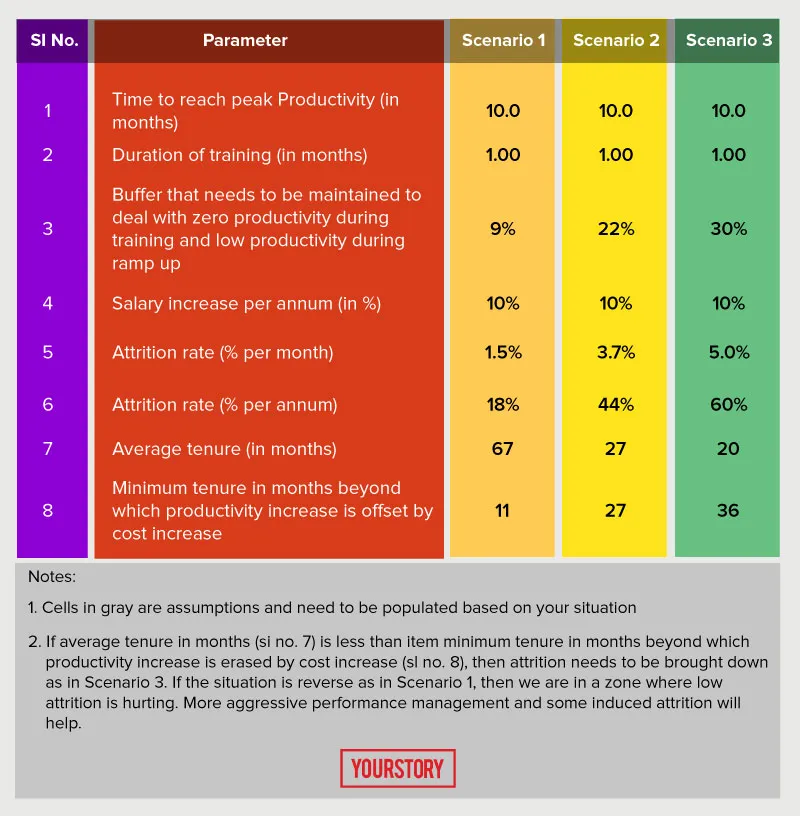Not all attrition is bad, so what’s a good balance?
Attrition, or loss of trained manpower, is a problem that plagues every industry, particularly industries where revenue has a linear relationship with manpower. This could be both in industries where the nature of work done is knowledge-intensive (say, consulting or investment research) or in industries where the nature of work is relatively repetitive or low-end (say, a call centre or a warehouse).
Attrition is one of the most hotly discussed topics in these industries, and there is a continuous and ongoing effort to manage it. Despite the focus and the amount of work that is done, there has been little or no attempt to quantify the impact and understand whether there is an optimum level of attrition that is actually desirable.

In knowledge-intensive industries like management consulting, there is an up-or-out philosophy. The underlying belief that drives this philosophy is that beyond a point, if an individual does not grow and therefore make a bigger impact, then the cost of this individual begins to outweigh the cost of training and ramping up someone fresh who comes in at a lower cost. In addition, the fresh person is likely to come in with greater hunger and fire in the belly than someone who may have tired over the years. And it is a fact that some do not develop sufficiently to take on more impactful roles and drop off at different levels.
The same is true in industries with relatively repetitive work like call centres or warehouses. Here too, the productivity quickly hits a plateau, beyond which the cost keeps ballooning and the cost per unit of output keeps going up.
The question then is, “What is an optimal level of attrition”? You don’t get to this question in many companies, especially when the industry as a whole is in a high growth phase, because companies are grappling with high attrition and are working hard to bring it down. It is when the industry is in a consolidation phase that cost of low attrition begins to bite. I have seen smart companies manage a healthy attrition and use it as a lever to drive profitability.
In this piece, I have put together a simple mathematical model that can sharpen the understanding on this topic and help make some informed choices. Obviously, it is very simplistic and needs to be used judiciously, but nevertheless acts as a pointer based on some sound logic.
Let’s first understand the reasons why attrition is harmful:
a) Attrition leads to a drop in productivity. Experienced staff tends to be more productive than fresh talent. One can, however, argue that beyond a point productivity actually begins to dip. This is the flip side of increased productivity with experience.
b) Cost of hiring and training. Hiring and training costs money. Every time a person leaves, it costs to hire and train a replacement.
Reasons why some attrition may be necessary:
a) Wage rates go up every year and experienced staff usually cost more than fresh talent.
b) There is a point beyond which cost goes up faster than productivity. There is a point beyond which absolute productivity could also dip because of tiring and boredom.
The struggle that a lot of people face is how to make this trade off. Here is a simple model that you could use.
The table below brings out three different scenarios:
Scenario 1, where low attrition is hurting; Scenario 3 where high attrition is hurting, and Scenario 2 where there is a balance.

In conclusion:
Attrition in itself is neither bad nor good. It depends upon the situation and the impact it has on the business. It goes without saying that this model needs to be used with caution. You could use it to help manage attrition in a balanced way – manage it when it is too high and manage it when it is too low. Both scenarios point to some deficiency that needs to be addressed.
(Disclaimer: The views and opinions expressed in this article are those of the author and do not necessarily reflect the views of YourStory.)







